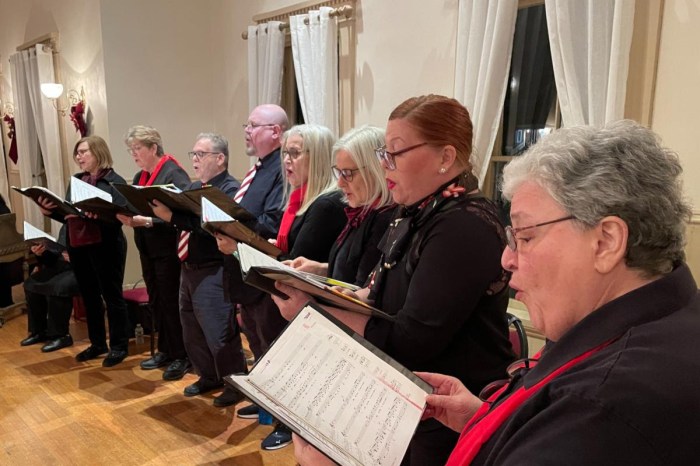The Bayside Historical Society is gathering artifacts from 70 years ago for an exhibit they’re planning to open in May, and they need help.
The exhibit, planned for a May opening, is called “Bayside Life: On the Edge of Modernity,” and focuses on the years 1939 and 1940. The Historical Society is seeking items from that era, according to Jennifer Dullahan.
“We’d like a 1939 radio, World’s Fair memorabilia, subway tokens from that era, a Toll House cookie tin, books and magazines, sheet music for ‘When You Wish Upon a Star’ which had been recorded by Glenn Miller, Count Basie and Louis Armstrong at the time,” she said.
The year 1939 is even more notable for Bayside than the rest of Queens.
The first World’s Fair held in Flushing Meadows-Corona Park opened that year, with the theme “World of Tomorrow.” In anticipation of the event, the Whitestone Bridge, LaGuardia Airport and Cross Island Parkway all opened about that time.
Years before that, Bayside was a tiny hamlet, on the edge of urbanization because of its proximity to Manhattan, Dullahan explained. “Bayside Hills had just been developed, and the little village had become a town,” she said.
“The population of Bayside had doubled by the 1920s, and doubled again by 1939,” said Alison McKay, curator of the upcoming exhibit. She pointed out that the population of the expanded Bayside had reached 29,000 by that time.
Though the World’s Fair stressed tomorrow and modernism had found its way into everyday artwork and architecture, many people, including Baysiders, were nostalgic for the past, according to Dullahan and McKay
It was around 1939 that “Bayside Life,” was published - a weekly magazine that chronicled the lives of town residents and emphasized its strictly local appeal and absence of European news coverage.
“It was commonly felt that that Bayside was no longer a small insular place,” McKay said. “I think that this magazine was in response to people longing for a sense of community and home-town feeling,” she observed, adding, “At the same time, there was a true sense of excitement in looking toward the future and a notion that modernization was erupting.”
Not surprisingly, missing copies of “Bayside Life” and information about its publisher, Nicholas Devore, Jr. are high on the wish list for the Society’s collection. “The magazine was only published for two years,” Dullahan said.
“We are unable to find out what happened to him,” she lamented, saying the trail went cold after Devore enlisted in the military and was sent to Europe during World War II.
“We know he did not die there,” she said, reaching out for information to solve their mystery. “We’d be so grateful.”
The Society is also asking the community to contribute to the exhibit by providing oral or written memories of Bayside during 1939 and 1940 and by lending artifacts from these two years for display.
“We can always use good volunteers and contributions, too,” Dullahan shyly observed.
For more information, visit their web site at www.baysidehistorical.org.



































